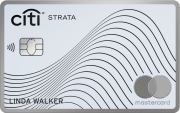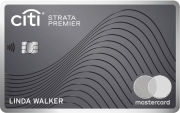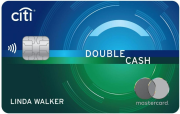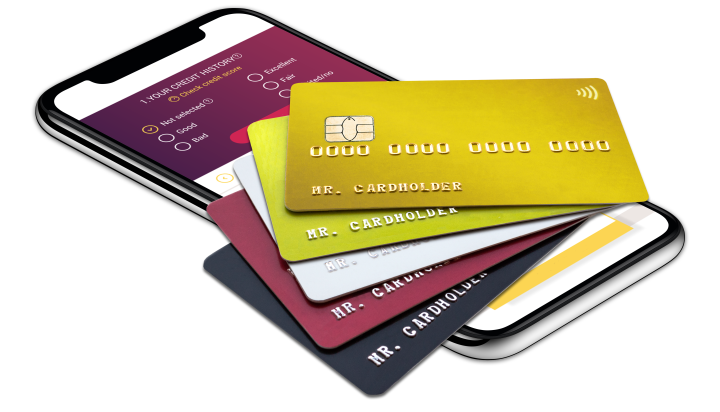The content on this page is accurate as of the posting date; however, some of the offers mentioned may have expired.

Comparing cards to find the one best-suited to your needs
About 74 percent of U.S. consumers have credit cards, according to Your Credit Card Companies, a Washington, D.C.-based consumer education group. Those who don't are in the "driver's seat" when it comes to getting a card that matches their lifestyle and needs, according to Daniel F Drummond, a spokesperson for the group. He notes that there are many credit card products out there, and that consumers would be well advised to evaluate all competing offers before making a decision about any one card. "You really are going to benefit from shopping for credit, not just taking the first thing that comes around," he says.
To that end, you need to establish a game plan that will allow you to evaluate the various types of card products offered on a comparative basis. Doing so will help you better understand what's available, and in turn, help you decide which type of card will best serve your needs, be it a balance transfer card, cash-back card, or any other available card type. From that point, the process of determining who offers the best deal within the card type you've selected will be quick and easy.
Credit Card Types
The first step to choosing the right credit card product is to realize that there are a variety of different cards available. Here are some of the most common types:
- Balance transfer credit cards - Allow you to transfer higher-interest credit card balances onto a credit card with a lower interest rate. For instance, if you transfer a balance to a credit card with a low introductory annual percentage rate (APR) of zero percent, the APR for this balance will typically stay at the lower interest level for a specified period of time, potentially saving you hundreds of dollars in interest charges.
- Low-interest credit cards - Offer either a low introductory APR that change to a higher rate later or to a low, fixed-rate APR. Using this type of card can offer significant savings on interest, especially when you make larger purchases and pay them off before the end of the introductory period.
- Cash-back credit cards - Give you cash rewards for making purchases with the card. Most cash rebates are around 1 percent of the total purchases, excluding interest and finance charges. This type of card is particularly good if you're faithful about paying off balances each month.
- Reward credit cards - Similar to cash-back cards, they offer frequent-flyer-miles, hotel discounts and other rewards just for using the card. Basically, you accumulate points toward a reward structure, based on how much you use the card over a period of time.
- Airline mile or frequent flyer credit cards - Award "mile" or "point" credits whenever you use your card, based on the dollar amount of your credit card purchases over a period of time. You can redeem your points for airline travel, much like you would in an airline-sponsored frequent flyer program. These cards are great if you travel frequently or simply want to use your card to plan vacations.
- Pre-paid cards - Work like gift cards at retail stores. You can deposit any amount you want and then use the card to make purchases up to that amount. These types of cards generally don't require a credit check, and some actually have credit re-builder and rewards programs.
- Secured credit cards - Cards that are "secured" with a cash deposit or other collateral. They're ideal if you have very little or damaged credit.
Comparing Apples to Apples
Once you determine which type of card product is right for you, it's time to compare apples to apples. In other words, you can now conduct a side-by-side comparison of the fees and terms of different cards within the product category you've selected.
It's easier than it sounds. Just make a written checklist of the most common features, fees and other terms offered by credit cards. If you're fond of spreadsheets, you can do this on the computer. Or for an even faster approach, try any of a number of credit analyzers, such as the one found at MSN Money.
Whether you make an electronic or paper-based analysis, here are some things you should compare: APR, introductory interest rate, introductory period, grace period for payments, online account access, online payment ability (manual and/or recurrent), exchange rate policy, etc. You also want to look at the various fees associated with the cards, such as annual, cash advance, balance transfer, foreign exchange, late and miscellaneous.
Determining the Best Card for Your Needs
The card best-suited to you and your needs depends largely on your purchasing and payment habits. The key is to think about how you will use the card, Drummond says. "People should consider things like whether they will be paying the balance in full, which 55 percent do," he explains. "They should also consider whether they're interested in things like airline miles and reward programs."
If you plan to carry a balance each month, a credit card with a low interest rate would be best. Or if you'd like to make a large purchase and save interest, you might consider a balance transfer card with a zero or low introductory rate.
Also, take a close look at the comparisons you made of the different cards. Keep in mind that promotional offers often change, so be sure to thoroughly look over the terms and conditions for each specific card before you apply.
Finally, keep in mind that the card best suited to you may not necessarily be the one with the lowest fees. Bottom line, the card you select should provide the best fit for your lifestyle while providing the greatest overall value, according to Drummond.
Card Usage by the Numbers
The latest research by San Francisco-based Consumer Action, a non-profit consumer education and advocacy group, reveals some interesting facts about credit card usage. For its Credit Card Survey 2004, the group examined 140 cards from 45 issuers. Among their findings:
- Slightly more than 23 percent of all surveyed cards offer rewards, such as cash rebates, points toward merchandise or airline mileage. The average interest rate on those rewards cards was 12.55 percent.
- Almost 80 percent of the cards offered lower introductory or "teaser" rates.
- The average interest rate on all surveyed cards was 11.97 percent - a drop from the 2003 average of 12.19 percent. Surveyors found 99 variable rate cards, with an average rate of 12.12 percent. The average rate on fixed-rate cards was 11.60 percent.
- Seventy-three percent of the surveyed cards had a higher APR for cash advances taken with the card. In addition to interest beginning to accrue immediately on cash advances, 103 cards charged higher rates on cash balances - the average cash rate was 19.50 percent.
- Approximately 68 percent of the cards examined (95 of 140) had no annual fees. Of those that did, annual fees ranged from $15 (Helena National Bank) to $99.95 (Eufora/Infibank).







